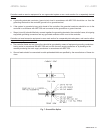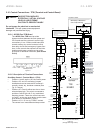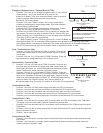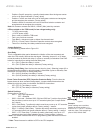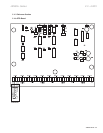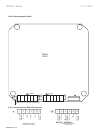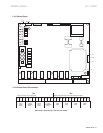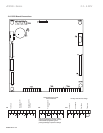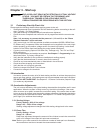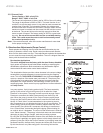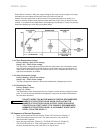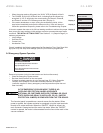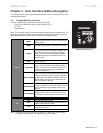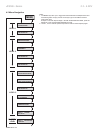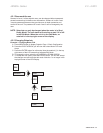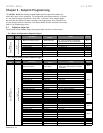
JKSSS+ Series - 29
JKSSS+ Series 2.3 - 4.2KV
JKSSS+
3.1 PreliminaryStart-UpCheckList
Please make the following checks before applying power to the unit:
• Qualied personnel have hi-potted the line and load wiring before connecting to the soft
start. (Typically 1.5 x Rated Voltage)
• Verify that all wiring is completed and all connections are tightened.
• Check the motor nameplate and conrm the unit is programmed with the correct motor
FLA.
Note: ItisnecessarytoconnectthelinepowertoL1,L2andL3,orthe“Phase
RotationProtection”willbeactivated.
• Verify control logic via 120V test switcher (available on standard JKSSS+ NEMA Class
E2 Starters only). A separate 120Vac test receptacle can be supplied to the control logic
without powering up the medium voltage section for control logic testing. It also allows
isolation of the 120Vac from back-feeding the control power transformer.
• Connect control supply (Optional “Soft Start Only” Package only). The “On” and “Stop”
LEDs will light up.
• Review all parameters and readjust as required. SeeChapter5-Programming for de-
tailed instructions. Try factory settings rst.
• Verify that the interlocks for the system are installed and working properly.
• Verify that the feed transformer is correctly sized for the motor(s).
• Check for any loose mechanical parts or metal debris in the enclosure.
• Check the motor strapping and connections.
• Verify that the unit is properly grounded.
• Remove tie straps from Blown Fuse Indicator.
• Connect line voltage to line terminals.
3.2Introduction
It is best to operate the motor at its full load starting condition to achieve the proper time,
torque and ramp settings. Initial settings are set to accommodate most motor conditions.
See Setpoint 5.1.2 Starter Conuration (Setpoint Page
2) to make any adjustments.
3.3AccelerationAdjustments
The unit is set at the factory with typical starting characteristics that perform well in most
applications. When the system is ready to start, try the initial unit settings. If the motor
does not come up to speed, increase the current limit setting. If the motor does not start
to turn as soon as desired, raise the starting voltage adjustment. Adjustment description
and procedures are described as follows. See Setpoint 5.1.2 Starter Conguration (Set-
point Page 2) for additional Accel settings.
3.3.1StartingVoltage
Starting voltage adjustment changes the initial starting voltage level to the motor.
3.3.2RampTime
Ramp time adjustment changes the amount of time it takes to reach the current limit
point or full voltage if the current limit point was not reached.
Note: Refer to your motor manual for the maximum number of starts per hour allowed by
the manufacturer and do not exceed the recommended number.
Chapter 3 - Start-up
WARNING



